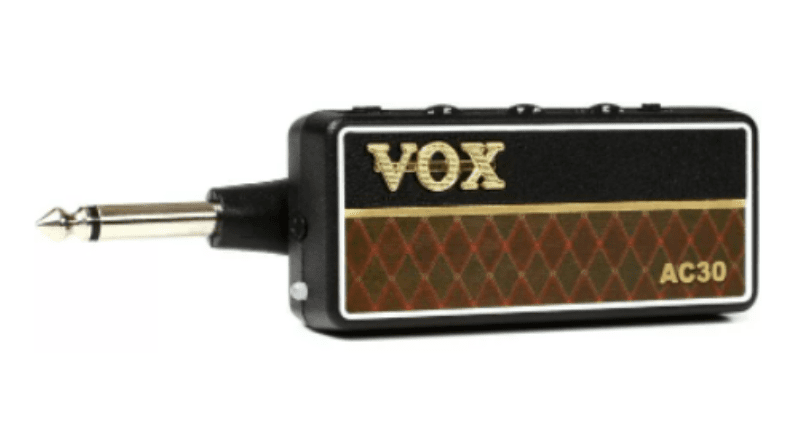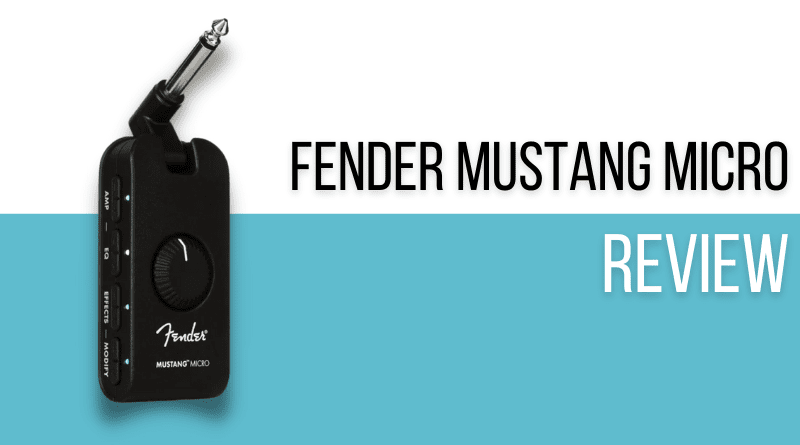The Fender Mustang Micro is the baby of the Fender Mustang family, and in a short space of time, it’s become one of the hottest sellers in Fender’s lineup. Not only does this compact headphone amp promise real Fender tone, but it also doubles as a USB audio interface, which only increases the appeal.
In this this KillerGuitarRigs Review, we got to spend some quality time with this micro amp. On paper it looks fantastic, but you’ll want to keep on reading as we discover how it performs in the real world.
Read more about our review process.
Contents
Who is This For?
The Mustang Micro really has no specific audience. Guitarists of all experience levels, and who play all styles of electric guitar music will find it to be a useful investment.
It’s perfect for silent practice anywhere, any time, and thanks to its ability to act as a USB interface, players looking to take their first steps into the world of recording can do so without having to purchase additional hardware – this is a huge bonus, and a rare feature in a headphone amp.
Appearance / Features / Controls
The Mustang Micro has a pretty simple form factor – it’s a bug style headphone amp, in plain black. In many ways its design is the visual embodiment of Fender’s amplifier reputation as a whole – clean.
It came with a 270° rotating input plug, which allows you to plug the device into almost any electric guitar, no matter which style of output jack it has. Some headphone amps have fixed jacks and therefore limited compatibility, so this feature was much appreciated.
It came with 4 simple controls; Amp, EQ, Effects, and Modify, all of which were simple to use. The Amp control allowed us to select from the 12 preset amps that are built into this device, and the EQ control gave us the ability to modify the tone. Effects gave us control over the 13 different FX types that come built in, and the Modify control was there to allow for modifying the amp’s parameters.
Another great feature that helps the Mustang Micro to stand out is Bluetooth audio streaming. While many alternative options have aux in, it’s rare to have Bluetooth connectivity in a headphone amp, giving you more physical freedom to move when playing along with backing tracks.
The Mustang Micro’s battery is USB rechargeable, which helps to keep long term ownership costs down. Charging is relatively quick, and yields a 4 to 6 hour playback time.
As briefly mentioned in the intro, it also comes with a USB-C connection for plugging straight into your computer. This makes firmware updates a simple process, and most interestingly, allows this headphone amp to double up as a USB interface.
Performance/Sound
We spent quite a lot of time trying different amps and effects on the Mustang Micro, and we were impressed by the variety of tones. Of course, this is an extremely basic modeler, so while it got into the ballpark of the sound of the present amps and effects, it fell short on fullness and depth of sound compared with something like the Boss Katana Waza Air headphones.
The 12 built in amp models include all the Fender classics such as the ‘65 Fender Twin, ‘65 Fender Deluxe, a Tweed Twin, and a Fender Bassbreaker. In addition, it also featured models inspired by famous amps from other makers, such as the Vox AC30, ‘65 Deluxe with Ibanez TS808, a Marshall Super Lead, a Mesa Dual Rectifier, a Friedman BE-100, and even a Bogner Uberschall.
We started off by testing the cleans through the Fender models, and we must say, that they sounded pretty good. They won’t have anybody rushing to replace their tube amps, but for practice purposes, they performed well.
Next, we tried to get some mild crunch by selecting the Fender ‘65 Deluxe with an Ibanez TS808, and added with some reverb. The Mustang Micro responded well, and gave us enough of the ear pleasing breakup we wanted without getting muddy.
To test out some distorted tones, we tried the Marshall Super Lead amp and Mesa Dual Rectifier. Both amps were able to provide a nice chug, but when you’re working with this much distortion, the limiting factor is likely to be your headphones. Having a quality set of cans really helped, so if you plan to use this amp a lot, and take advantage of the heavier tones, it’s important to have the best headphones you can afford.
The effects section of the amp gave us a basic set of guitar effects, including reverb, delay, flanger, chorus, and tremolo. The effect generally sounded good, but with the lack of any kind of display and the use of digital controls, we think it might be an issue for newer players in particular to figure out exactly which effect they’re using at any given time.
Other Headphone Amps to Consider
Although the Fender Mustang Micro is one of the hottest headphone amps on the market, there are still other options to consider – whether for a cheaper price or for a different design/style. So, before we wrap this review up, let’s take a look at two more options for headphone guitar amps.
Vox amPlug 2 AC30

The Vox amPlug 2 AC30 is a more traditional bug style headphone guitar amp. It’s a model that has been around for quite some time. It’s modeled on the Vox AC30, so expect tons of chime, and quality cleans. Like the Mustang Micro, it does come with multiple FX built in, although there are no additional amp models to choose from. Coming in at around half the price of the Fender, this Vox headphone amp is a great deal if you’re not interested in modeling and recording features.
Blackstar amPlug 2 FLY

The Blackstar amPlug 2 FLY is another headphone amp that is offered at a similar price point to Vox amPlug 2 AC30. The Blackstar amPlug 2 FLY is also solely a practice guitar amp, and again, cannot double as a recording device. This headphone amp comes with three tone options, plus a wide selection of effects. It’s a great alternative to the Vox if, again, you’re not looking for a modeler, but you’re not into the Vox “sound”
Final Thoughts on the Fender Mustang Micro:
The Fender Mustang Micro was a lot of fun to use, but it’s not something we’d ever consider as a replacement for a traditional amp, or even to replace an interface. It’s well made, and it’s a great tool to keep in a gig bag for some silent practice, and perhaps even to record when inspiration strikes, but it simply doesn’t have the full array of features, or even sound quality that you’d need to replace the rest of your gear.
As far as headphone amps go, though, it’s one of the better options out there, and if you understand its limitations, we’re sure you’ll love it.
Check out these other articles you might like:

